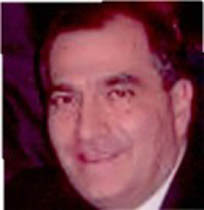Catchers Priorities-What are the most important things to do?
Our catchers need to understand that the role they play in the outcome of the game, every game, is every bit a determining factor, as the guy on the mound. That’s not to say that there are only two important players on the field at any one given time that would be dead wrong and certainly very narrow-minded.
HOWEVER, there is no denying that everything “takes off” from that runway between the mound and home plate and because that’s the first breath of every pitch of every batter in every game, there just has to be a close relationship between winning and losing and these two positions. Having said that, it’s clear to everyone that, having the upper hand with your pitcher that can just flat out throw gas, hit his spots and mix his pitches, certainly makes things easier. The trouble is when the opposition has that same looking
gasser on the mound as well. So what makes the difference, or at the very least, what can make the difference in a tight ball game?
The catcher.
We all hear the usual words and praises when we win a close one; they were on the same page; they were in sync all game long; he knew exactly what his pitcher wanted to throw,
yada,
yada,
yada,
yada. What’s really going on here?
Well, we work on those things that we believe make a profound difference in the kind of game our pitcher may throw. Realistically, nothing is for certain in this game, but when two teams are evenly matched on the mound, and the apparent difference will come to who is the most effective on the mound, then the catcher plays a huge role in that formula. So what are the key things that we drill into the catchers? There are three simple things for young catchers to learn and they are in this order and they must be second nature to him and we ask our catchers to repeat them throughout the season. They are:
1. STEAL PITCHES…ALWAYS
2. BLOCK PITCHES, even in the bull pen
3. THROW PEOPLE OUT
That’s it folks. It’s that simple and that complicated. Why do we drill our catchers in that manner and in that order? Remember, these are in their order of importance and it bears repeating; steal pitches, block pitches and throw people out.
First of all we know one thing is going to happen 100% of the time in the game; our pitcher is going to pitch a pitch, no doubt about it. That means he has the potential of throwing anywhere from 80 to 110 pitches and in that number lies the question every coach wishes he knew before the game; how many innings will that get me? A lot of that answer is dependant on the way the catcher receives the ball! Can he steal the corners for the big guy, or is he losing the strike zone by inches that can make a profound difference in final pitch count and batter advantages in the count? YOU HAVE GOT TO STEAL STRIKES 100% of the time! Every pitch, every batter, all of the time! How we do that will be in our next article.
How about the next critical element in the catchers role – BLOCKING. This is where we separate the men from the boys. There is nothing more impressive than watching a young man block and CONTROL the ball in a crucial situation. We have actually placed a box for blocked pitches that prevent a runner from advancing or a run from scoring. There should be a stat called
RBO, (Run Blocked Out), for the catcher because that one simple task effect’s so much of the game, that when done correctly, they are clearly game savers; and when not…game losers. While it ranks number 2 in frequency to stealing pitches, it really takes an exceptional young man to WANT to block an 85-95 MPH fastball being thrown at him. The good ones know that it’s the overlooked skill from the bleachers, most people are easy on the catcher when it comes to calling a pass ball versus a wild pitch. However, our catchers get called past balls when they are warming up the pitchers in the bull pen and in between innings! So they know that they have to perform all the time. They also know that great blocking catchers do nothing but endear themselves to the pitchers and coaching staff. There are just a few people around the team that realize just how much better you made the pitches breaking pitch, when he knows that you’re a lean, mean, blocking machine back there.
The last and most overrated skill needed is to throw people out. Yep, overrated. Now let’s face it there is nothing more intimidating to the other team and their coach than to see a 1.90 -2.0 arm behind the plate. But there are some real conditions that must exist with that kind of arm if you really want to be sure that he is a good throwing catcher. The first is, does he throw 1.90 in
pre-game while he’s standing up, because that's no big deal. What does he do from the squat? How quick are his hands and feet? How accurate are his throws? However, the real question for the start of the game is, who’s pitching and what is his time to the plate from the half. That’s what really matters and that’s why we place the least amount of emphasis on throwing. Our catchers cannot control how quickly the pitcher will get them the ball, but they can and must absolutely control stealing pitches and blocking pitches. Furthermore, when you look at the major league level, you see some starters throwing out less than 25% of the steal attempts and others averaging in the high 30’s. Every once in a while there comes along a
Pudge that skews the average, but NEVER throws out 100% of the base
stealer's. In case you’re wondering, we also spend a lot of time with our pitcher’s getting the catcher the ball with something on it in about 1.3 seconds or less. If you have a guy getting the catcher the ball in 1.5, 6, 7 or 8, you might as well go to the drugstore and buy a bottle of Dramamine because you’ll be feeling like your on a merry-go-round by time the nights over!
So we are back to what happens the most often and what will affect the pitchers performance the most and it clearly is not base stealing or throwing runners out and it’s not blocking a pitch. It’s what we work constantly on in the off-season, in
pre-season and during the games…STEALING PITCHES.
So if you're looking for the smoothest thief in
da joint, here's a hint, he’s squatting behind the plate!
src="http://pagead2.googlesyndication.com/pagead/show_ads.js">


